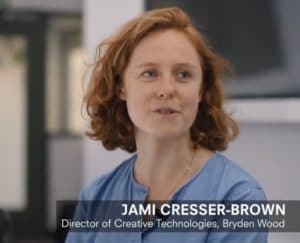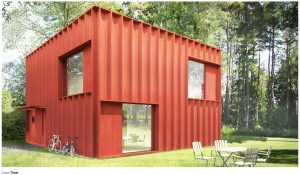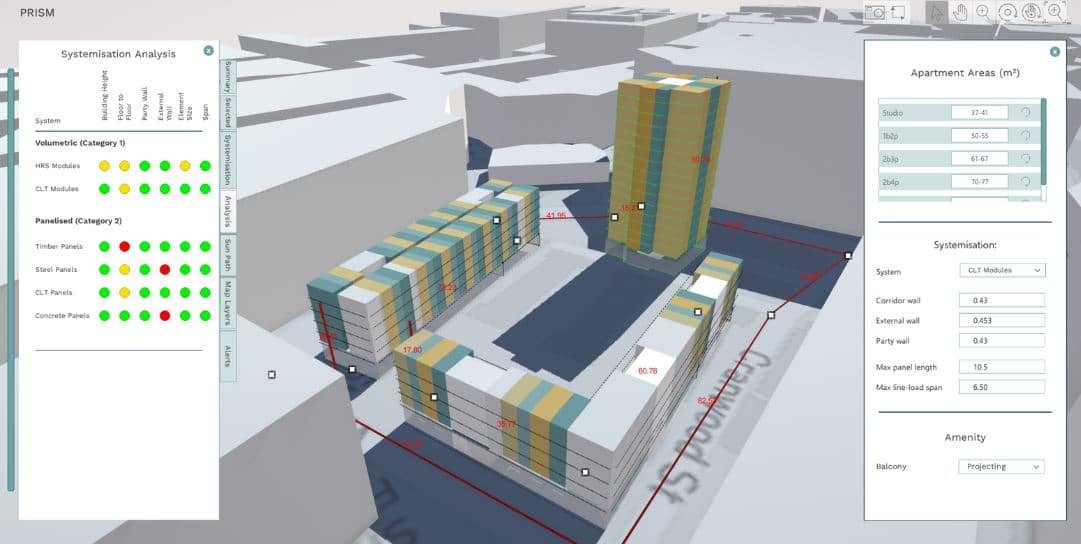I learned recently that architects are involved in only 2% of the newly constructed built environment in the UK. A week later, a report released based on a housing design audit for England that had examined over 140 housing developments built since 2007 revealed that 75% of them should not have gone ahead due to ‘mediocre’ or ‘poor’ design, of which 25% failed to meet planning regulations. However, it may surprise you that the route to improvement is not to use architects more often. Crowdsourcing offers more potential.
Architects work on one-off projects, not standardised products, and are losing ground as the traditional gatekeepers of building design. Designtech software is increasingly available from non-architect sources, and it allows other non-architects to have an input.
There is also the cost element. Architects can be relatively expensive. In the day-to-day machinations of trying to resolve the UK’s acknowledged housing shortage, “Planning authorities are under pressure to deliver new homes and are therefore prioritising numbers in the short-term over the long-term negative impacts of bad design. At the same time, house builders have little incentive to improve when their designs continue to pass through the planning system,” said Professor Matthew Carmona (of The Bartlett School of Planning, University College London), Chair of the Place Alliance, who led the research.
Crowdsourcing among building end-users
Recent construction industry success stories have been based on crowdsourcing input from building end-users, whether they are a community of residents, students patients, workers – whoever.
 Bryden Wood is a building planning and design organisation that blends architecture with engineering. Their Director of Creative Technologies Jami Cresser-Brown agrees the role of a building designer is changing from meaning an architect. They have pioneered digital designtech that enables their clients to accelerate the design process through crowdsourcing input from the intended end-users of buildings.
Bryden Wood is a building planning and design organisation that blends architecture with engineering. Their Director of Creative Technologies Jami Cresser-Brown agrees the role of a building designer is changing from meaning an architect. They have pioneered digital designtech that enables their clients to accelerate the design process through crowdsourcing input from the intended end-users of buildings.
The process allows people with no training or experience to begin an on-screen design process that is pre-loaded with technical matters such as building regulations and characteristics of different materials. Department of Education requirements for “must-haves” including storage space toilet facilities are embedded and automatically included in the designs. The app points out issues that need modification, and when complete the design can be exported to visualise it in 3D.
Their Seismic School App is an open source app that accelerates the design of primary schools for 5-11 year olds through generating input from the children and teaching staff, which is then applied to the final design of modular construction units that are built off-site and assembled at the point of use. The on-screen design process can take minutes rather than weeks.
Prism (source of the main image) is their open source app which accelerates the design process for off-site precision manufactured housing (PMH) for London. It is free and easy to use and combines the city’s spatial planning rules with precision manufacturer expertise to help anyone to quickly determine viable PMH options for their development.
The intention is that both apps improve over time as they receive more input from users. Though there do appear to be limits to how much information some people are prepared to provide.
Data collection to encourage more diverse providers
Sarah Gold, the founder of Projects by If, began to train as an architect and switched to industrial design. Projects by If aims to be at the leading edge of building design through using big data and artificial intelligence to research and prototype data services that will best help a range of industry sectors, including property developers
In 2019 they spent a month collaborating with Homes England, part of the UK government with a mission to intervene in the housing market and radically increase the number of homes being built. Large developers have the resources to invest in a lengthy and expensive process of acquiring land, submitting proposals and eventually receiving permission to go ahead. For the scale of future house building to reach government targets, more SME developers (small and medium size enterprises) will have to be encouraged to take part through local authorities providing more and better information to speed up all stages of the process. Collecting, managing and re-distributing this data is where Projects by If focused its efforts.
The sorts of data include advising the SME developers when land becomes available in the first place, what uses similarly sized plots been used for in the past, how long planning applications took to be approved, and more.
However, like Creative Technologies, they also hit a wall of concerns over personal privacy related to housing developments. Questions to involve end-users such as “we see you want more play space for children, how old are yours?” tended to see many respondents end their involvement.
So the technology to use big data and AI exists, the potential is there for faster design of buildings that are more in line with end-user expectations, though sourcing raw material (personal data) needs added safeguards that perhaps meet some as yet unagreed, publicly acceptable – and protected – standards.
Asking the wider public
A form of questioning that avoided asking for any personal data has been used recently by a US social media influencer, Kate Rumson, who has asked her more than two million Instagram followers to design her new home.
 Once Kate had narrowed each aspect down to alternative solutions that she would be happy with either way, her followers could vote on issues such as should the kitchen sink be in the middle of the room or under a window?
Once Kate had narrowed each aspect down to alternative solutions that she would be happy with either way, her followers could vote on issues such as should the kitchen sink be in the middle of the room or under a window?
Needless to say, as a social media influencer Kate Rumson is partnering with a long list of major brands who will supply flooring, cabinets, appliances and more. Crowdsourcing design solutions for her new home brings these brands some prominent and valuable attention, and is an example of crowdsourced marketing. Kate gets a sink, the brand-owner gets clicks.
Does designtech and crowdsourcing input from non-experts devalue architects?
We suppose it could, if architects sit back and don’t respond. Though it is possible to picture scenarios where collecting big data, crowdsourcing input from end-users and applying AI will provide architects with a platform where they can operate at the intersection of artificial intelligence with human intelligence. This could enable them to perform a better role than ever before, and here’s how that worked in Sweden.
 An example of building design based on data collection was a house designed from information on 86,000 properties up for sale through a real estate agents’ online site, coupled with what two million site users said they were looking for in their ideal property. This information was distilled down and provided to architects who created a final design that was described as the “archetypal Swedish home designed by two million people,” and widely known as “the House of a Thousand Clicks.” There were plans for the final design to be put in to practice as a modular construction home, factory-built with off-site precision and then delivered in major pieces to be assembled on-site.
An example of building design based on data collection was a house designed from information on 86,000 properties up for sale through a real estate agents’ online site, coupled with what two million site users said they were looking for in their ideal property. This information was distilled down and provided to architects who created a final design that was described as the “archetypal Swedish home designed by two million people,” and widely known as “the House of a Thousand Clicks.” There were plans for the final design to be put in to practice as a modular construction home, factory-built with off-site precision and then delivered in major pieces to be assembled on-site.
What experiences do you have of designtech in your own environment?






0 Comments